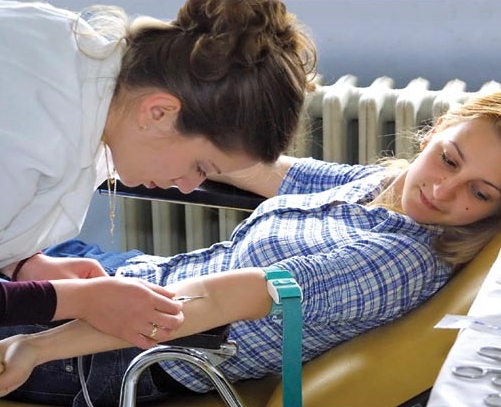**Title: History of Phlebotomy: Tracing the Evolution of Bloodletting**
**Introduction:**
Phlebotomy, the practice of drawing blood from patients for various purposes, has a long and storied history dating back thousands of years. From ancient civilizations to modern medical practices, the art of phlebotomy has evolved significantly over time. Let’s delve into the fascinating history of phlebotomy and explore how this essential medical procedure has developed over the centuries.
**Ancient Origins:**
Phlebotomy has been practiced for millennia, with ancient civilizations such as the Egyptians, Greeks, and Romans all employing bloodletting as a medical treatment. The ancient Egyptians believed that bloodletting could cure a variety of ailments and would use sharp tools to make incisions and drain blood from the body. Similarly, the Greeks and Romans practiced bloodletting as a way to balance the body’s humors and treat illnesses.
**Medieval Practices:**
During the Middle Ages, bloodletting reached new heights of popularity in Europe. The practice was based on the theory of the four humors, which held that the body’s health was dependent on the balance of blood, phlegm, yellow bile, and black bile. Bloodletting was believed to restore this balance and was used to treat everything from fevers to mental illnesses.
**Renaissance and Enlightenment:**
In the Renaissance and Enlightenment periods, phlebotomy continued to be a common medical practice. However, as scientific knowledge advanced, the medical community began to question the efficacy of bloodletting. Physicians like William Harvey, who discovered the circulation of blood in the 17th century, challenged the traditional practice of bloodletting and helped pave the way for more evidence-based medical treatments.
**Modern Phlebotomy:**
Today, phlebotomy is a standardized and regulated medical procedure performed by trained professionals known as phlebotomists. The practice involves drawing blood from patients for diagnostic testing, blood donation, or medical treatments. Phlebotomists use sterile techniques and equipment to ensure the safety and comfort of patients during the blood draw process.
**Benefits of Phlebotomy:**
– Allows for the diagnosis and monitoring of various medical conditions
– Facilitates blood donation, which is essential for saving lives
– Helps healthcare professionals make informed treatment decisions
- Plays a crucial role in medical research and clinical trials
**Practical Tips for Phlebotomy:**
– Stay calm and reassure the patient during the blood draw process
– Use proper technique and equipment to ensure accurate results
- Follow safety protocols to prevent the risk of infection or injury
– Maintain good communication with the patient to address any concerns or questions
**Case Study:**
In a recent study published by the Journal of Phlebotomy, researchers found that proper training and experience are essential for reducing complications during phlebotomy procedures. The study highlights the importance of ongoing education and professional development for phlebotomists to ensure quality patient care.
**Conclusion:**
The history of phlebotomy is a testament to the evolution of medical practices over time. From ancient bloodletting rituals to modern clinical procedures, the art of phlebotomy has come a long way. Today, phlebotomy plays a crucial role in healthcare, allowing for the diagnosis, treatment, and monitoring of various medical conditions. By understanding the rich history of phlebotomy, we can appreciate the advancements that have been made in this essential medical practice.
